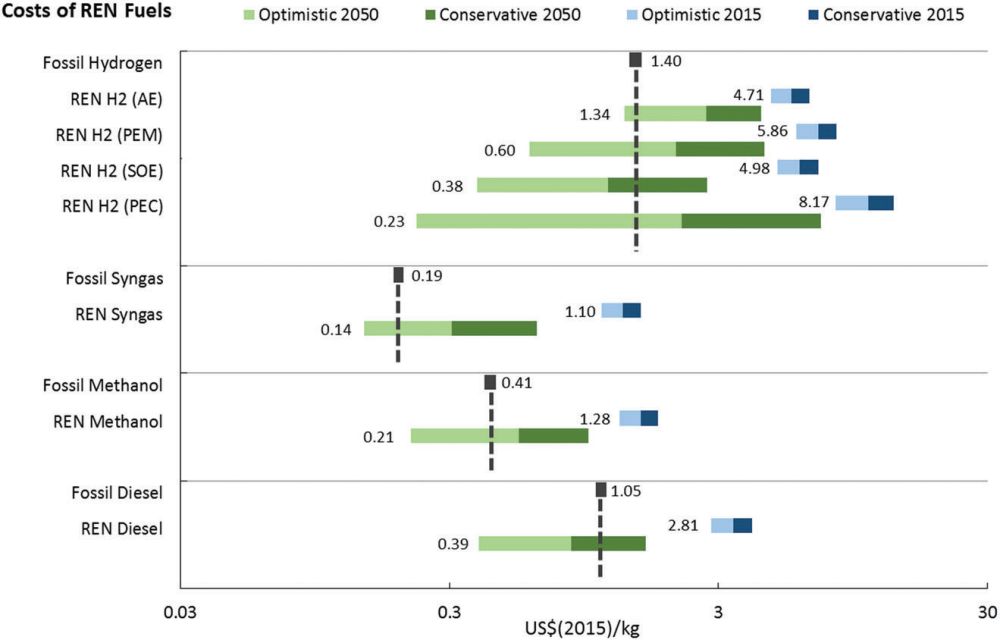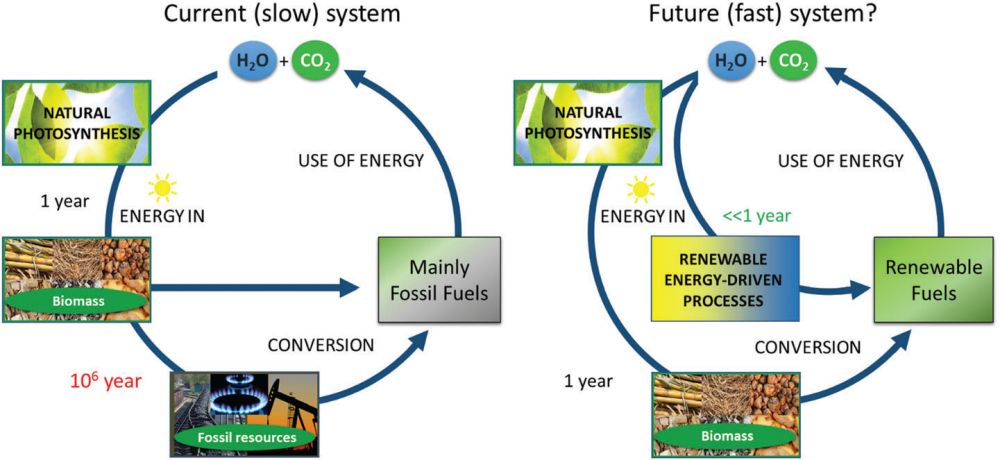
Solar fuels could eventually compete with fossil fuels
It would appear that the costs of producing Solar Fuels, fuels such as hydrogen, syngas, methanol and diesel from renewable energy, are set to decrease so strongly that they'll be competing with fossil fuels within twenty years.
That was the conclusion drawn by researchers from TNO-ECN and the University of Amsterdam in an article in the Energy & Environmental Sciences journal, reports a press release from the University of Amsterdam about the so-called Solar Fuels, that are produced using renewable energy – i.e. don't have a fossil source. The study relates to the possible price development of Solar Fuels over the coming decades. These are currently 3 to 10 times more expensive than fossil fuels, which is why they're not commonly used.
Learning curves
The prognoses for Solar Fuels are based on cost reductions of the various techniques for producing these fuels and by learning effects and greater efficiencies of scale. ‘We have made an estimate for this,’ emphasises Remko Detz from TNO-ECN. ‘But this is not just some stab in the dark. We are basing it on learning curves that have occurred in the past, such as for solar panels and wind turbines.’

The outcomes show that in the optimistic scenario, Solar Fuels will start to compete with fossil fuels over the next two decades. In the conservative scenario, that will only apply to green hydrogen and green diesel.
Perspective
The importance of the study, according to Detz, is that it demonstrates that investing in Solar Fuels now will pay dividends in the future. ‘We have to get over the initial obstacle of high costs, but we do so because we consider it important to use these alternative fuels, and we're focusing on greater efficiencies of scale, as that gives us a better perspective.’

According to the researchers, there are various reasons why we'll need Solar Fuels in the future (read also ‘KIVI energy plan: we can deal with irregular wind and sun’)
- For the storage of renewable energy when the wind and sun are producing more than is needed at that moment in time.
- A high-density energy source is especially handy for heavy transport and air traffic
- They serve as raw materials for industry, for example for making plastics, coatings and the like.
Various production methods
There are various routes to take for the production of Solar Fuels using the sun's energy.

► Heat
Use the sun to create extremely high temperatures in for instance solar plants, and use that heat to produce hydrogen, or carbon monoxide from CO2. These two steps can then produce ethanol or diesel.
► Electricity
Conversion to electricity using solar panels has become commonplace these days. That electricity can be used to produce hydrogen or produce hydrocarbon directly from water and CO2 via so-called co-electrolysis (read also ‘The Netherlands has a chance to produce electrolysers’).
► Natural photosynthesis
Trees, plants, algae and other living matter convert sunlight into biomass, which can then be converted into biofuels.
► Artificial photosynthesis
A great deal of effort is also being invested in simulating natural photosynthesis, with the sunlight being converted directly into hydrogen.
Depending on the method selected, it turns out that hydrogen, syngas, methanol and diesel can be produced at an efficiency that varies between 56 and 67%. This figure is the ratio of total energy input and the energy content of the hydrogen, methanol and diesel. But it illustrates right away that this route for energy storage is only useful when there is no alternative to the Solar Fuel.
Costs will fall
We then looked at the price of producing those Solar Fuels using all the methods mentioned. We have included all costs where possible, including interest to be paid on investments and, for example, the price of water and CO2.
The differences versus fossil fuels are clear to see. The price of hydrogen from natural gas is 1.4 dollars per kilo, but as a Solar Fuel the cost quickly runs up to 3 to 11 dollars per kg. For diesel and methanol, the difference is a factor of three.
But just suppose that Solar Fuels do become more popular, reasoned the researchers, then the costs will fall owing to learning effects. Because this is just an estimate, we have applied scenarios. Optimistic for rapid application of the technology and a major learning effect, and conservative for the opposite. The scenarios thus give us the ‘boundaries’ within which prices will likely develop.
In the optimistic scenario, it turns out that all Solar Fuels can compete with fossil fuels. In the conservative one, hydrogen and diesel are still competitive.
If you found this article interesting, subscribe for free to our weekly newsletter!
Opening photo: artificial tree creates fuels using sunlight, and water and CO2 from the air. Photo: Solar Fuels Institute.
Meer artikelen

Een AI-fabriek in Groningen

Gezondheid meten via zweetdruppels
Nieuwste artikelen

Een AI-fabriek in Groningen






